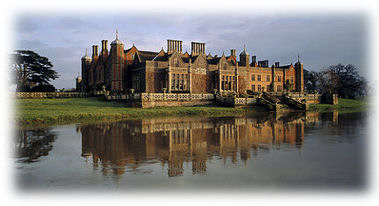Franks Forage No 10. The Silver Centrepiece.
On the base of one of the three sides is the following inscription:- PRESENTED TO THOMAS WILLIAMSON ESQUIRE BY THE INHABITANTS OF THE PROVINCES UNDER THE BOMBAY PRESIDENCY. THE SIRDARS (NATIVE CHIEFS) OF THE DECCANI AND THE PRINCIPAL NATIVE MERCHANTS AND OTHERS OF BOMBAY IN TOKEN OF THEIR RESPECT, ESTEEM AND GRATITUDE FOR THE ABILITY, ZEAL AND SUCCESS WITH WHICH DURING AN OFFICIAL CAREER OF TWENTY-THREE YEARS AS A SERVANT OF THE HONOURABLE COMPANY ESPECIALLY WHILE FILLING THE HIGH AND RESPONSIBLE OFFICES OF REVENUE COMMISSIONER AND SECRETARY TO THE GOVERNMENT. HE LABOURED TO DEVELOP THE RESOURCES OF THE COUNTRY TO IMPROVE THE CONDITION OF THE PEOPLE AND TO PROMOTE THEIR BEST INTERESTS EMINENTLY CONDUCING THEREBY TO RENDER BRITISH RULE IN INDIA A BLESSING ESTABLISHING AT THE SAME TIME A LASTING CLAIM ON THE PEOPLE AS A FRIEND AND BENEFACTOR. NOVEMBER 1842. Although the inscription doesn’t include the name Ramsay, it can be assumed that the reference is to Thomas Williamson Ramsay and the piece is inherited from the Fairfax side of the family. The room guide folder incorrectly states that Thomas is the father of Archibald Montgomerie Williamson Ramsay, connecting him to the portrait on the stairs. In fact, he is her brother. The Thomas of the portrait died in 1838 and the piece was presented in 1842. Thomas Williamson Ramsay (of the portrait) had three sons and four daughters. His second son was also Thomas and he did live for many years in India. As the brother of Archibald he was the brother-in-law of Sir Henry Fairfax, 1st. baronet. He died unmarried. What do we know about the centrepiece itself? From the hallmark we learn that it was made in London in 1842 by the silversmiths Mortimer and Hunt who had their workshop in Harrison Street, Gray’s Inn Road. John Mortimer was in partnership with Paul Storr until the latter’s retirement in 1839 whereupon John Samuel Hunt and his son John became partners. John Mortimer retired in 1843 so the partnership of Mortimer and Hunt lasted for four years. A number, 1224, inscribed on the piece could be the maker’s serial number. What of the three figures represented on the piece? From Shirley Rodden’s information they are believed to be merchant princes. The one with the protruding headdress is a Parsee, a Persian follower of Zoroaster, founder of the faith Zoroastrianism. There was and probably still is a sizable community of Parsees in Bombay. The one with a dagger in his belt is a Jew and the third a Deccani Indian from the large Deccan plateau in central India which included Bombay in British India. Thomas Williamson himself was of merchant family operating in Leith. He died in London 1871 Frank Storr Frank would welcome comments and any additional information you may have on ‘Frank’s Forages’. Contact him by email on n.splurge@btinternet.com You can also leave comments in the Tuesday Day Leader’s pigeon hole. |


